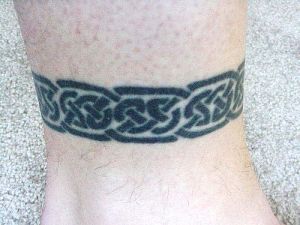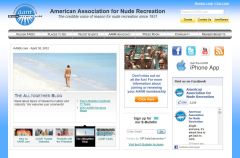Less is More, or Finding Focus in the Art of Subtraction
 “I saw the angel in the marble and carved until I set him free.”
“I saw the angel in the marble and carved until I set him free.”
I was inspired to rediscover this quote from Michelangelo upon bringing into our home an ornately carved Asian coffee table. My partner inherited the piece of furniture from his parents after his mother’s recent passing. The table is an extraordinary example of meticulous craftsmanship. From a single oval slab of wood, an artist has uncovered oriental maidens, pagodas, flowering trees and even a dragon. Just as Michelangelo could see an angel hiding in a block of marble, so did this anonymous artisan see characters living in the wood. What does this have to do with business? What does this have to do with nudism? Everything.
I am in the business of helping people discover and share why customers should choose their companies over their competitors. I do this by helping them determine the right messages and the best images to promote in print and on the Web. How do I discover and craft the most meaningful messages and media for my clients? I ask some leading questions, and then I listen, echo and fine-tune. I’m certainly no Michelangelo, but like the artist, I do my best to take a shapeless mass and cut away what isn’t relevant to set free the essence of what lies beneath. It’s a tough thing to do for your own business (tough even for me to do for mine!), but it can be done. Here’s how to get started:
First, consider yourself; not your company…yourself: What are your skills, your talents? (Don’t be modest.) What are your professional passions? What would others say are the benefits of working with you? Are they right, or are your true gifts hidden beneath the image you think you should project to the world?
Next, consider your industry and marketplace: What are the traits of the people who work within or serve this industry? What needs do they have? What frustrations do they share? Think there might be opportunities there, if you uncover them? It’s worth the effort to find out.
Next, consider your company and your competitors: What do you do better than them? What do they do better than you? Why do your current customers choose you over your competition? Why do the customers you lose forsake you in favor of your competitors?
With your competitors in mind, consider your differentiators: Do you truly stand apart, or do you promote the same features and benefits as everyone else?
Consider, too (and perhaps most importantly), your key prospects and customers: What do they really want and need? Do they truly care about what you think you should promote? Here’s an example: I have a client who is a realtor. He explained that he wants his business to be about creating relationships. I took exception to this. Why? After all, isn’t fostering great relationships a good thing? Sure, but when you are in residential real estate, your customers might not need your service again for 20 years. Even though being a pleasure to work with IS important and can lead to referrals year after year, what his key prospects and customers care most about is creating a successful real-time experience and transaction – buying or selling a home. They aren’t looking for a long-term relationship with a realtor. They simply want to make it through a complex and stressful experience feeling less stress and more joy. This is a different approach to marketing his business than he envisioned, but it’s one that should speak to the needs and desires of his target customers.
The Bottom Line:
These are just a few of the essential questions that can help you and your business cut through the wood, the stone, or the marble to expose a masterpiece that will be appreciated by others. By carving away unnecessary layers – think of it as the art of subtraction – you can eliminate barriers between you and those in your target community. And that, my friends, is a concept that owes much to the essence of nudism. Less, indeed, is more. And it’s a thing of beauty, in business and in life.
Want to learn more? Contact me today. Thanks!
Bob











